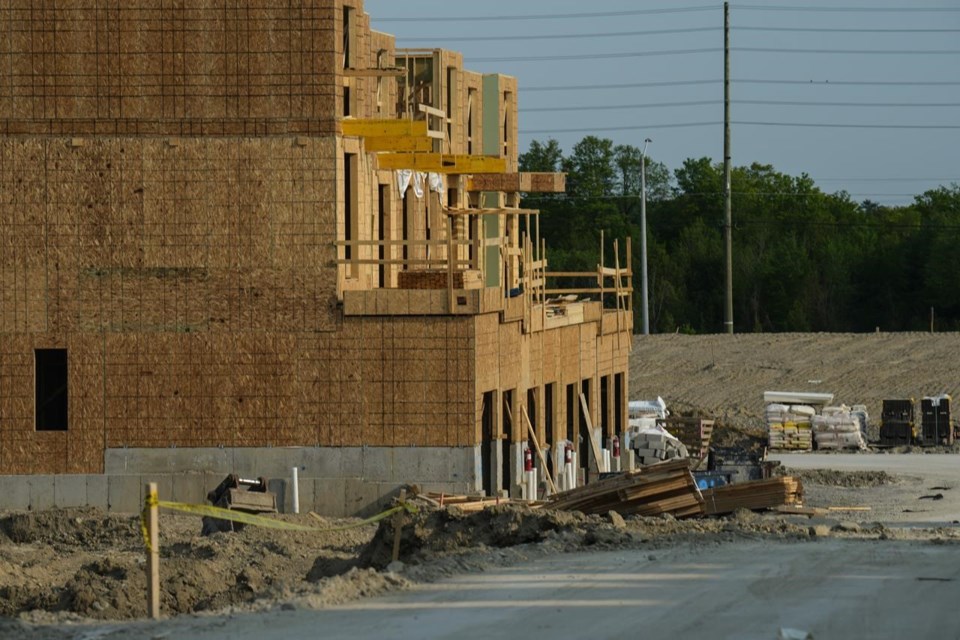OTTAWA — Canada's housing agency says the annual pace of housing starts in June posted its largest month-over-month increase in a decade to slightly reverse a downward trend seen in recent months.
Canada Mortgage and Housing Corp. says the seasonally adjusted annual rate of housing starts in Canada totalled 281,373 units in June, up from 200,018 in May as there was a spike in activity in the more volatile mutli-unit category.
The rate of multi-unit urban starts rose 59 per cent to 219,914, while the rate of starts for single-detached urban homes increased three per cent to 42,901.
Toronto and Vancouver led the way in construction, making up 47 per cent of total starts, as their actual year-to-date starts were 32 per cent and 49 per cent higher respectively than the same period last year.
Looking at the longer-term trend across the country, represented by the six-month moving average of the seasonally adjusted annual rate, shows 234,974 units in June, up 2.4 per cent from May.
The uptick reverses a steady downward slide that started in November as rising interest rates made it harder to build, but not enough to shake the long-term trend, the agency said.
"Housing starts for the first half of the year were eight per cent lower than they were over the same period in 2022 as the high interest rate environment continues to challenge housing starts through increasing borrowing costs,” said CHMC chief economist Bob Dugan in a statement.
The decline in housing starts from last year comes despite a CMHC projection that Canada needs significantly ramp up supply to tackle the housing crisis.
It projected in June 2022 that, based on the rate of construction at the time, the country would need to build an additional 3.5 million units of housing by 2030 on top of what was already expected to restore affordability.
TD economist Marc Ercolao said that the while the June jump was impressive, the six-month moving average continued to fall slightly.
"One month is not enough to turn around the long-running downward trend in the sector," he said in a note.
Slowing home sales continued to feed into falling construction activity, which, despite a second-quarter pop, are expected to trend lower going forward, said Ercolao.
"This burst should be short-lived and, as high interest rates continue to work through the economy, homebuilding will be a drag on residential investment in the coming quarters."
This report by The Canadian Press was first published July 18, 2023.
Ian Bickis, The Canadian Press



